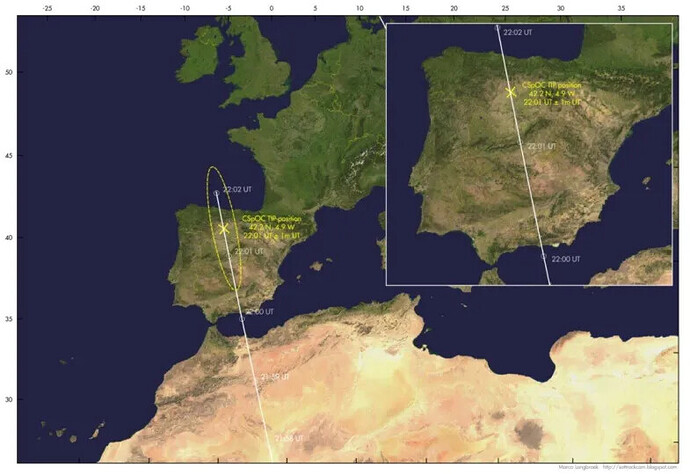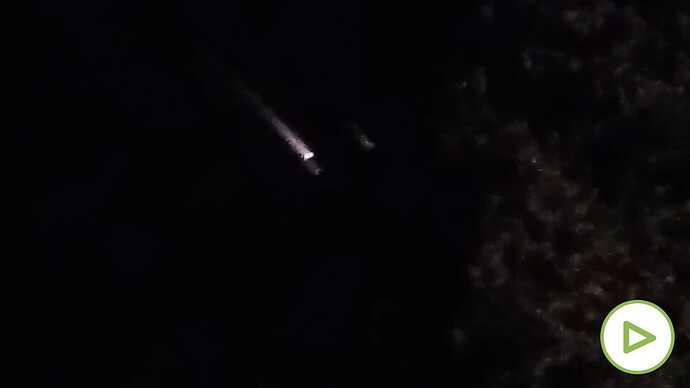Chinese scientists call for plan to destroy Elon Musk's Starlink satellites
Chinese military researchers say Starlink could threaten China's national security
China may be looking at alternative ways to counter Starlink because ASAT missiles create hazardous conditions for all nations operating in space. Explosions in orbit are dangerous not just on their own, but also because of the many thousands of debris pieces they create (ranging from basketball-size to as small as a grain of sand). This space shrapnel has the potential to cause serious damage to satellites. In November 2021, a Russian anti-satellite missile test blew up a defunct Soviet-era spy satellite in low-Earth orbit and created a debris field of at least 1,632 pieces that forced U.S. astronauts aboard the International Space Station to hide in their docked capsules, according to a US Space Force Database of orbital objects.
The U.S., China, India and Russia have all carried out ASAT tests in the past, creating space junk in the process. The U.S. announced a ban on further ASAT tests in April. In October 2021, Chinese scientists claimed to have designed a way to avoid the debris problem with an explosive device that could be packed inside a satellite's exhaust nozzle, safely blowing up the satellite without making any mess and in a way that could be mistaken for an engine malfunction.
Chinese military researchers have called for the development of a "hard kill" weapon to destroy Elon Musk's Starlink satellite system if it threatens China's national security.
The researchers drew attention to Starlink's "huge potential for military applications" and the need for China to develop countermeasures to surveill, disable or even destroy the growing satellite megaconstellation. Their paper was published last month in the journal China's Modern Defence Technology. A translated copy of the paper is available here(opens in new tab).
The Chinese researchers were particularly concerned by the potential military capabilities of the constellation, which they claim could be used to track hypersonic missiles; dramatically boost the data transmission speeds of U.S. drones and stealth fighter jets; or even ram into and destroy Chinese satellites. China has had some near misses with Starlink satellites already, having written to the U.N. last year to complain that the country's space station was forced to perform emergency maneuvers to avoid "close encounters" with Starlink satellites in July and October 2021.
"A combination of soft and hard kill methods should be adopted to make some Starlink satellites lose their functions and destroy the constellation's operating system," the researchers, led by Ren Yuanzhen, a researcher at the Beijing Institute of Tracking and Telecommunications, which is part of the Chinese military's Strategic Support Force, wrote in the paper. Hard and soft kill are the two categories of space weapons, with hard kill being weapons that physically strike their targets (like missiles) and soft kill including jamming and laser weapons.
China already has multiple methods for disabling satellites. These include microwave jammers that can disrupt communications or fry electrical components; powerful, millimeter-resolution lasers that can nab high-resolution images and blind satellite sensors; cyber-weapons to hack into satellite networks; and long-range anti-satellite (ASAT) missiles to destroy them, according to the U.S. Department of Defense(opens in new tab). But the researchers say that these measures, which are effective against individual satellites, won't be enough to scuttle Starlink.
"The Starlink constellation constitutes a decentralised system. The confrontation is not about individual satellites, but the whole system," the researchers wrote. The researchers also outlined how an attack on the Starlink system would require "some low-cost, high-efficiency measures."
Exactly what these measures could be remains unclear.
The researchers propose that China should build its own spy satellites to better snoop on Starlink; find new and improved ways to hack its systems; and develop more efficient methods to down multiple satellites in the network. This could potentially mean the deployment of lasers, microwave weapons or smaller satellites that could be used to swarm Starlink's satellites. China is also looking to compete with Starlink directly through the launch of its own satellite network. Called Xing Wang, or Starnet, it also aims to provide global internet access to paying customers.
Starlink has been used for military purposes before. Just two days after Russia's invasion of Ukraine on Feb. 24, Ukrainian Vice Prime Minister Mykhailo Fedorov wrote on Twitter asking Musk to deploy more Starlink satellites to the country. Speaking at the World Economic Forum at Davos, Switzerland, on May 24, Fedorov said that SpaceX has so far provided more than 12,000 Starlink satellite dishes to Ukraine, while adding that "all critical infrastructure [in Ukraine] uses Starlink."
Earlier this month, Elon Musk wrote on Twitter(opens in new tab) that Russia had made multiple signal-jamming and hacking attempts on Starlink. A note from Dmitry Rogozin, the director of the Russian space agency Roscosmos, to Russian media also appeared to threaten Musk, accusing him of supplying "militants of the Nazi Azov battalion" with "military communication equipment" and claimed that Musk would be held accountable.
Musk responded by writing(opens in new tab) on Twitter, "If I die under mysterious circumstances, it's been nice knowin ya."
According to a recently released report from the U.S. Department of Defense, China has more than doubled its number of intelligence, surveillance and reconnaissance (ISR) satellites since 2019, from 124 to 250. At the beginning of 2022, China's total number of satellites, including non-ISR ones, was was 499, second only to the United States' 2,944, of which Starlink makes up more than 2,300, [according to the Union of Concerned Scientists
(Satellite Database | Union of Concerned Scientists).


